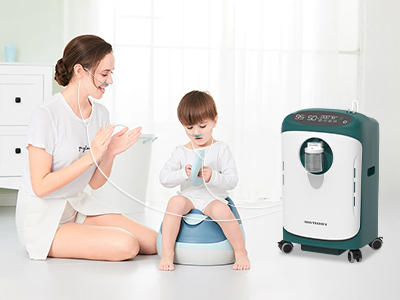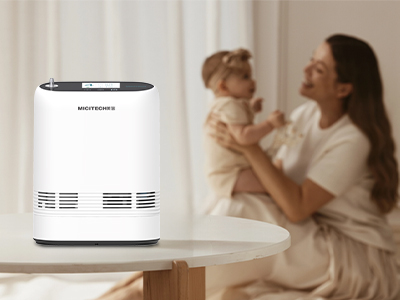09 Jun 2025
Let’s understanding the risks of home oxygen therapy, first things first, oxygen is not flammable, but it’s what firefighters would call a fire accelerant. It doesn’t start fires, but once there’s a spark, it’s the biggest hype man in the room. That scented candle? Now a napalm grenade. That gas stove? A flamethrower with culinary ambitions. That cigarette Uncle Bob insists on lighting? Tell him to smoke 3 miles away or not at all.
Besides combustion risk, oxygen therapy equipment introduces tripping hazards, suffocation risks (hello, tubing spaghetti), and the ever-tempting buttons, knobs, and “DO NOT TOUCH” labels that children find irresistibly seductive.

Creating a No-Fire Zone
Imagine you’re designing a tiny space station where fire is public enemy number one. Your oxygen therapy area should be exactly that: a strict no-fire zone. Here’s what to do:
Ban All Flames and Sparks: No candles. No gas burners. No fireplaces. No lighters. No smoking. No exceptions.
Unplug Heat-Generating Devices Nearby: That includes hair dryers, space heaters, electric blankets, or even a lava lamp if you’re still living that 1970s dream.
Post Warning Signs: Put up clear “No Smoking” or “Oxygen in Use” signs near every entrance and in the oxygen therapy area. It may feel dramatic, but drama is better than drama plus fire.
Managing Oxygen Tubing Like a Pro
Oxygen tubing has a sneaky way of turning into a jungle vine across your living room floor. Children—particularly the ones who believe they are part-ninja, part-ballerina—can easily trip over it or get tangled. You’re going to need a plan:
Use Tubing Covers or Clips: These little heroes keep tubes flush against walls or floors, reducing trip risk and making your home look less like a low-budget sci-fi set.
Avoid Loops and Knots: Always keep tubing straight and tidy. Tangled tubes are not only dangerous but a nightmare when your child tries to bolt with the speed of a caffeinated squirrel.
Limit Length Where Possible: Excess tubing is not more freedom—it’s more risk. Keep it just long enough for comfort, not long enough to lasso your coffee table.
Secure the Equipment (Because Kids Are Creative)
If your child is mobile, curious, or even remotely inventive, they will treat oxygen equipment as a puzzle designed for them to solve. Your job? Lock it down.
Oxygen Tanks: Use a stand or secure them to the wall. A falling oxygen tank is like a mini torpedo that no one asked for.
Concentrators and Regulators: Place machines out of reach, preferably in an area where airflow is good and toddler fingers are few.
Cover the Controls: Use plastic safety covers or a well-placed “off-limits” speech. (Pro tip: children rarely listen to speeches, so stick with the covers.)
Mind the Humidifiers and Accessories
Some oxygen machines come with humidifiers to prevent nasal dryness, which is great for comfort but awful if your child sees it as a splash zone.e signs that indicate their lungs are up to the challenge.
Keep Water Levels in Check: Too much water = risk of spillage into electrical components. Yikes.
Use Child-Resistant Caps: A curious child plus accessible water chamber equals a miniature indoor tsunami.
Secure Tubing Connections: Loose fittings can lead to leaks, which is bad for therapy and worse for safety.

Safety Beyond the Obvious
Once the fire risks and tripping hazards are addressed, look deeper.
Carbon Monoxide Detectors: Oxygen therapy doesn’t cause carbon monoxide buildup, but if there’s a leak from a gas appliance nearby, your child is more at risk. Get a detector.
Ventilation is Key: Keep therapy areas well ventilated to prevent oxygen buildup. That means no tiny sealed rooms.
Emergency Plan in Place: Know what to do if a fire does break out. Keep a fire extinguisher (not one based on oxygen, please), and teach older children what to do in an emergency.
Educating Everyone Who Walks In
Your child’s safety isn’t just about how you set up the home—it’s about the people who enter it.
Babysitters, Grandparents, and Friends: Give them the lowdown on your no-spark, no-mess, oxygen-aware rules. Better yet, print out a cheat sheet.
Delivery Personnel and Maintenance Workers: They don’t need your life story, but a quick “Just so you know, oxygen in use here—no flames, please,” will suffice.
Storage and Transportation: The Mobile Safety Chapter
Your child’s world doesn’t stop at your living room, and neither should your safety protocols.
Oxygen Tanks on the Go: Use proper carrying cases. Don’t toss them in the back seat like a gym bag.
Secure Tanks During Transport: They should be upright, snug, and not rolling around like soda cans in a trunk.
Don’t Leave in Hot Cars: Oxygen tanks and heat are a combustible duo. Think of it as a summer road trip with dynamite—just don’t.
Keywords: oxygen therapy
Originally published 09 Jun 2025, updated 09 Jun 2025.